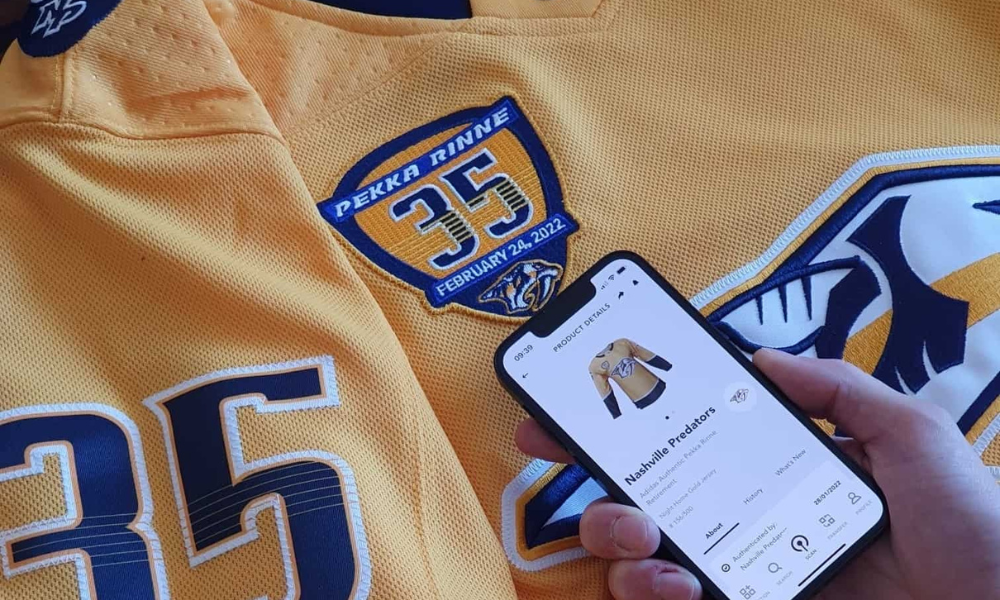By David Geisser, CEO and Founder of collectID
When the COVID-19 pandemic hit, the live sports business was flipped on its head, and had to find unconventional, new and innovative ways to interact with its consumers. Things changed quickly, and the industry was forced to accelerate its innovation into overdrive.
Sports teams, which usually depended heavily on their fans showing up to the game for revenue and engagement, no longer had that option. Before the pandemic, it was as simple as filling up an arena or a stadium with customers who would buy tickets, food and refreshments, and potentially some merchandise to enjoy and feel part of the game. After the pandemic calmed, live sports had to completely rethink and re-shape the way it had historically engaged with.
With a sudden surge towards digital at the beginning of the pandemic, this shift from “in real life” to digital was easy for some, and harder for others. The sports industry relied heavily on in-person events and the bricks and mortar merchandise stands to keep up their connection to consumers, which in turn brought millions of pounds into the sector and the associated jobs. When the pandemic became a new normal, the sports business realised it had to adapt its practices to keep fans and consumers hooked. They had no choice but to ramp up their digital presence.
The sports world opens its stadiums to innovation
This period left a legacy and using the latest Web3 technology to enhance fan engagement is part of a fast-growing revolution in the way that major sports clubs interact with and learn about their fans. The sports industry is finding that creating a bridge between the physical, in-person atmosphere and excitement of a sports event and the online world, is more important today than ever before.
Two main technology innovations that have catapulted in this time are the metaverse and NFTs. The world of European football has revealed itself as a perfect breeding ground for both and many teams and brands have created NFTs for fans and consumers to interact and feel closer to the action. The biggest teams were obviously the earliest adopters, UK Premier League teams such as Manchester City led the way in 2021, major European clubs like FC Barcelona followed closely behind. FC Porto recently announced that it will build a virtual stadium in the metaverse.
But the game is now going beyond the virtual, teams are now looking for a way to get the best of both worlds. Major sports teams are international brands that have become
household names around the world, on par with Coca Cola or Nike. They are marketing machines. As brands, they understand above all that the emotional connection still comes from products you touch in the real world, so the new gold rush is about building that “phygital” bridge, products that let the consumer move between the physical and digital seamlessly.
Walk straight into the metaverse wearing your team’s colours
Teams are looking for ways to make their physical products metaverse-ready. Imagine buying your team’s latest shirt and walking straight into a virtual world to talk to members of a fan group about it? Or better, running onto the pitch wearing it as your avatar plays as part of a computer game.
Instead of logging onto a team message board or the team’s social media to get the latest news from the club, personalised news about your favourite players could be sent to you through your replica shirt, scarf or football.
There is also the possibility to assign the ownership of a product to the official owner, certify if it is a limited edition item and for what occasion and connecting it to exclusive content, as well as invitations to groups or events in the metaverse.
Teams can also learn from these interactions and data and use it to improve the overall experience for their fans and learn about their following, whether it is in the physical or digital world. FC Barcelona reportedly learnt this the hard way with its Spotify deal early this year significantly reduced as it only had 1% of its fan data available.
Keeping it real
Another important potential for this phygital revolution, connecting physical items to the blockchain through an NFC chip (as in contactless bank cards) to the NFT (a unique digital signature securely stored in an incorruptible blockchain) is that it solves an age old problem in the sports merchandise business; counterfeit goods.
The market for fakes has such a damaging effect on the live sports industry, not just because the merchandise lowers to the value of the real thing and the reputation of the team, but the low quality of these black market items making them cheaply available is a result of producers ignoring manufacturing regulations that respect labour law, the environment as just a starting point.
Thinking beyond the stadium has been a strategy for the live sports industry for some time but over the last two and half years have been a game-changer making the fan experience more enriching and involved for the fan and more fruitful for the teams and players.









